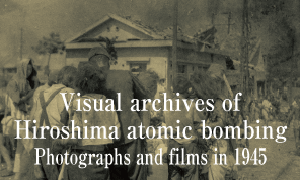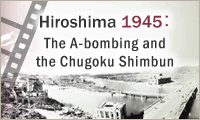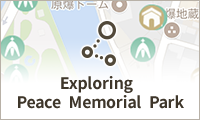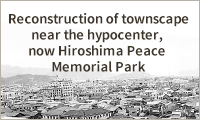Green belt: Imako Tanaka, “Hiroshima Keith Haring Saw,” Part 2
Apr. 22, 2025
Keith Haring (1958-1990) was born in the state of Pennsylvania in the eastern United States. Influenced by his father, an amateur cartoonist, he began drawing before he was old enough to understand what was going on around him. During Haring’s childhood, the U.S. was experiencing economic growth, but social changes such as the Cold War, the civil rights movement, and the Vietnam War were ongoing. For Haring, who was brought up in a devout Christian family, the magazines like Life and Look that he read at his grandmother’s home were valuable sources of information to know about the wide world.
After graduating from high school, Haring enrolled in a commercial art school in Pittsburgh at his parents’ recommendation. However, he felt limited there in pursuit of self-realization, and moved to New York in 1978 to find the lifestyle he wanted. During the day, as a student, he frequently visited art museums to learn about art across different times and cultures, trying to express himself through various media such as painting, imagery, and performance. At night, he immersed himself in the downtown club scene, expanding his network and community.
At that time in New York, when the advertising posters on subway trains expired, the signboards were covered with black paper. Haring noticed this. On those surfaces, he quickly drew images in white chalk while avoiding the police. His drawings announced the coming of the seasons to subway passengers and sometimes challenged them to think about social issues. As soon as these “subway drawings” made Haring’s name famous in the city, he began holding exhibitions and producing works across continents, including Europe, South America, Africa, and Australia. (Imako Tanaka, chief curator of the Nakamura Keith Haring Collection in Yamanashi Prefecture)
(Originally published on April 22, 2025)
After graduating from high school, Haring enrolled in a commercial art school in Pittsburgh at his parents’ recommendation. However, he felt limited there in pursuit of self-realization, and moved to New York in 1978 to find the lifestyle he wanted. During the day, as a student, he frequently visited art museums to learn about art across different times and cultures, trying to express himself through various media such as painting, imagery, and performance. At night, he immersed himself in the downtown club scene, expanding his network and community.
At that time in New York, when the advertising posters on subway trains expired, the signboards were covered with black paper. Haring noticed this. On those surfaces, he quickly drew images in white chalk while avoiding the police. His drawings announced the coming of the seasons to subway passengers and sometimes challenged them to think about social issues. As soon as these “subway drawings” made Haring’s name famous in the city, he began holding exhibitions and producing works across continents, including Europe, South America, Africa, and Australia. (Imako Tanaka, chief curator of the Nakamura Keith Haring Collection in Yamanashi Prefecture)
(Originally published on April 22, 2025)






